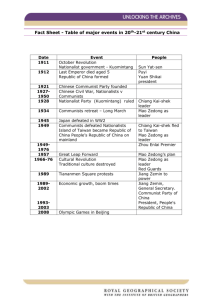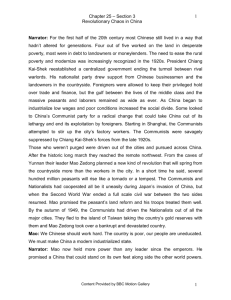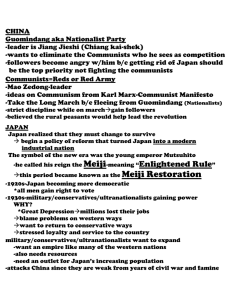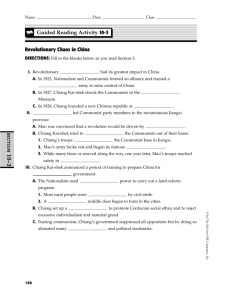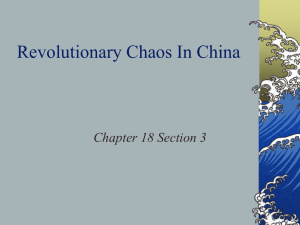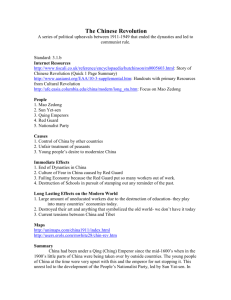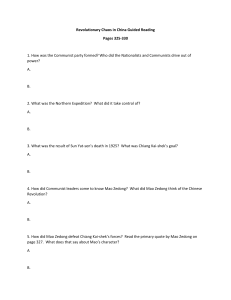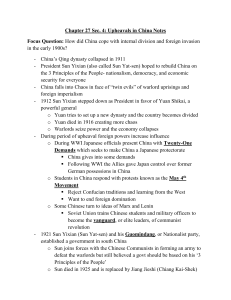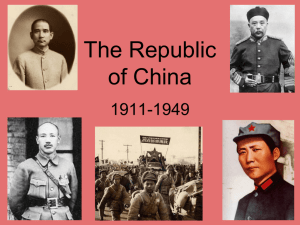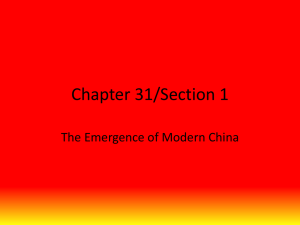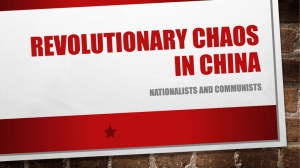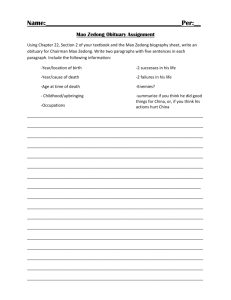East Asia
advertisement
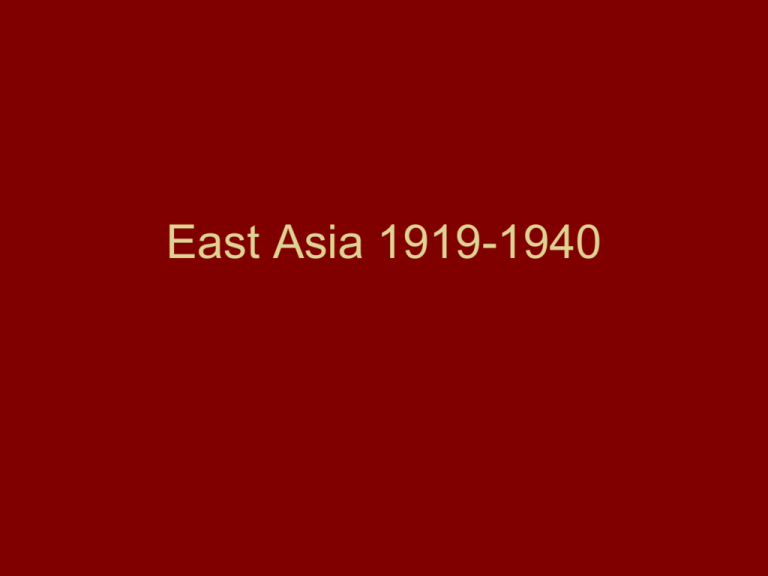
East Asia 1919-1940 Social & Economic Changes • Early 20th c. China -- Rapid population growth, lowering food supply, greedy landlords, frequent floods • Powerful in China: – Landowners – Wealthy merchants – Foreigners Educated Chinese jealous of lifestyle of foreigners Revolution & War • Defeat to international forces – many students thought Qing should be overthrown, China modernized • 1911 – regional army unit mutinied, Sun Yat-sen’s Revolutionary Alliance formed, Sun elected as president of China • 1912 -- Presidency turned over to General Yuan Shikai, who ruled as autocrat • Yuan Shikai wanted to be the next Emperor of China Sun Yat-Sen Warlords & the Guomindang • Paris peace conference (settlement of WWI) – Japan allowed to keep control of former German enclaves in China • Protests in Beijing and other parts of China, 1919 – May Fourth Movement • Regional warlords supported armies through plunder and arbitrary taxation The May Fourth Movement • • • • Rejection of Confucianism, traditionalism Western democracy idealized Women’s liberation Simplified Chinese script to increase literacy • Western-style individualism Sun Yat-Sen’s comeback • 1920’s – Sun Yat-Sen organized Guomindang party along Leninist lines – welcomed members of the Chinese Communist Party. • 1927 – Yat-Sen’s successor, Chiang Kai-Shek, crushed regional warlords • Chiang split with and betrayed Communist Party, started top-down industrial modernization • Chiang’s government full of corrupt opportunists instead of competent administrators – China remained poor ChiangKai Shek The Manchurian Incident • 1931 – Ultranationalist, young Japanese army officers wanted to colonize China • Junior officers made explosion in Manchurian railway post excuse to conquer all of province – Japanese govt. agreed after fact. • Heavy industries and railways built, armament sped up • At home – government more authoritarian, assassinations brought generals and admirals political power Mao Zedong & Rise of Communists • Communists main challenge to Chiang Kai-Shek’s government since betrayal • Communists fled to Jiangxi in SE China • Mao Zedong, son of farmer, took leadership of Communist party in 1920’s • Wanted peasant, agricultural revolution (departure from Marxist-Leninist ideology) • Advocated women’s equality, but top party positions reserved for men Mao Zedong • Son of landlord – but rebelled against father • Influenced by Marxist Li Dazhao • Became leader of CCP during Long March The Long March • Guomindang chased Communists into mountains • Mao responded w/Guerilla warfare and policies designed to win peasants over • 1934 – Communists surrounded in Jiangxi and forced to flee on The Long March – 6,000 miles on foot • 1935 – Communists arrive in Shaanxi much weakened and reduced in number Chinese communists on the Long March Women & the Revolution • Marxism – women as equal • Improvement of educational opportunities once in power • More women entering medicine & other professions than in Western world • Equal rights: property holding, marriage & divorce, authority over children • Women could be CCP members & officals Women & the Revolution (cont) • Other issues ignored: birth control & domestic violence • Almost all higher party positions held by men
